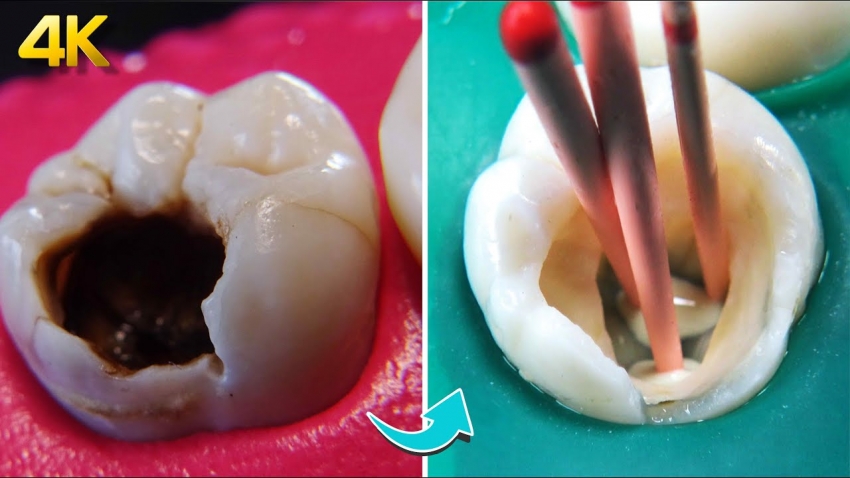
Cavities are holes, or areas of tooth decay, that form in your teeth surfaces. Causes include plaque buildup, eating lots of sugary snacks and poor oral hygiene. Treatments include dental fillings, root canal therapy and tooth extraction. The sooner you treat a cavity, the better your chance for a predictable outcome and optimal oral health.
Overview
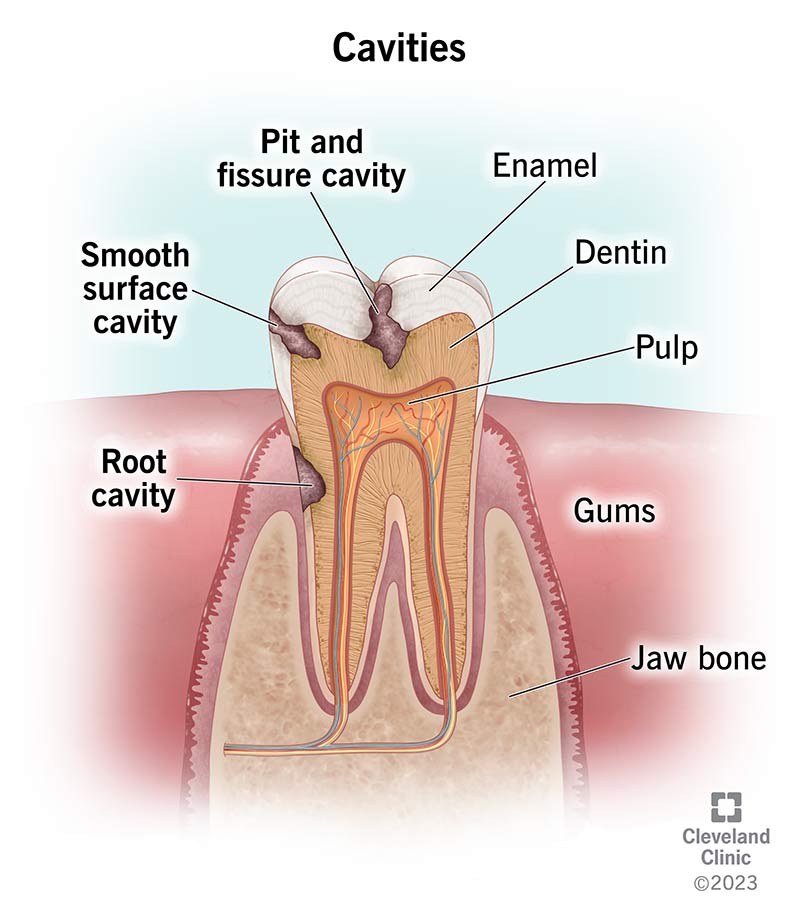
What is a cavity?
A cavity is a hole in a tooth that develops from tooth decay. Cavities form when acids in your mouth wear down (erode) your tooth’s hard outer layer (enamel). Anyone can get a cavity. Proper oral hygiene and regular dental cleanings can prevent cavities.
Another name for tooth cavities is dental caries.
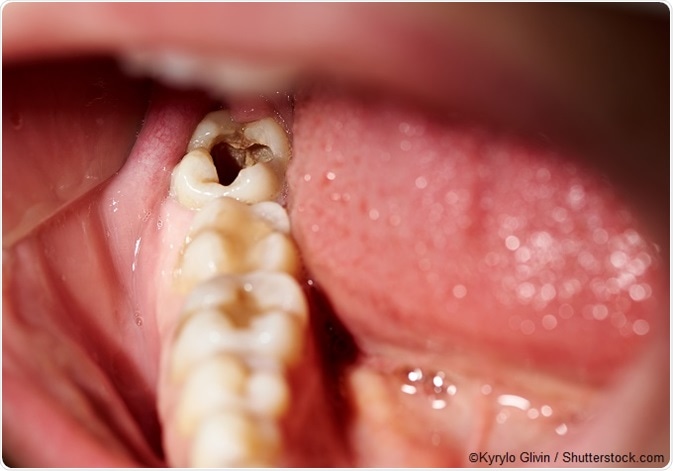
Types of cavities
Cavities can start on any tooth surface. Here are common types of cavities and where they occur:
- Smooth surface: This slow-growing cavity dissolves tooth enamel. You can prevent it — and sometimes reverse it — with proper oral hygiene. People in their 20s often develop this form of tooth decay between their teeth.
- Pit and fissure decay: Cavities form on the top part of your tooth’s chewing surface. Decay also can affect the front side of your back teeth. Pit and fissure decay tends to start during the teenage years and progresses quickly.
- Root decay: Adults who have receding gums are more prone to root decay. Gum recession exposes your teeth roots to dental plaque and acid. Root decay is difficult to prevent and treat. (If you’re prone to gum recession, ask your dentist if you should schedule an appointment with a periodontist.)
How common are cavities?
More than 80% of Americans have at least one cavity by the time they enter their mid-30s. Cavities are one of the most common chronic diseases affecting people of all ages.
Who might get a cavity?
Tooth decay can happen at any age, although cavities are more common in children. This is because many children don’t brush properly or regularly enough and they tend to consume more sugary foods and drinks.
Many adults also get cavities. Sometimes, new decay develops around the edges of cavities treated in childhood. Adults are also more likely to have receding gums. This condition exposes your teeth roots to plaque, which can cause cavities.

Symptoms and Causes
What are the signs of cavities?
Tooth decay on the outer enamel surface doesn’t usually cause pain or symptoms. You’re more likely to experience symptoms as decay reaches beyond the enamel into the dentin and pulp.
Cavity symptoms include:
- Bad breath or a bad taste in your mouth.
- Bleeding gums or other signs of gum disease.
- Facial swelling.
- Toothache or mouth pain.
- Tooth sensitivity to hot or cold foods or drinks.
Tooth decay stages
Cavities can affect all layers of your tooth.
There are five main tooth decay stages:
- Demineralization: During this first stage, you may notice small, white, chalky spots on your tooth. This is due to the breakdown of minerals in your tooth enamel.
- Enamel decay: Left untreated, tooth decay progresses and continues to break down your enamel. At this point, cavities (holes) may become noticeable. White spots may turn to a light brownish color.
- Dentin decay: Dentin is the layer just beneath your tooth enamel. It’s much softer than your enamel. So, once plaque and bacteria reach this layer, cavities form faster. At this stage, you may notice teeth sensitivity. The spots on your teeth may also turn to a darker brown.
- Pulp damage: Your tooth pulp is the innermost layer of your tooth. It contains nerves and blood vessels that transport nutrients and keep your tooth alive. When cavities reach your pulp, you may feel pain. You may also start to notice redness and swelling in the gums around your tooth. The spots on your tooth may turn darker brown or black.
- Abscessed tooth: Left untreated, a deep cavity can cause infection. This results in a pocket of pus that forms at the tip of your tooth root (periapical abscess). Symptoms may include pain that radiates into your jaw or face. You may also develop facial swelling and swollen lymph nodes in your neck. At this point, a tooth abscess can spread to surrounding tissues and other areas of your body. In rare cases, infection can even spread to your brain or to your bloodstream (sepsis).

What causes cavities?
Many factors play a role in the development of cavities.
Here’s how it works:
- Bacteria in your mouth feed on sugary, starchy foods and drinks (fruit, candy, bread, cereal, sodas, juice and milk). The bacteria convert these carbohydrates into acids.
- Bacteria, acid, food and saliva mix to form dental plaque. This sticky substance coats your teeth.
- Without proper brushing and flossing, acids in plaque dissolve tooth enamel, creating cavities, or holes, in the enamel surface.
What are the risk factors for cavities?
Certain factors increase your risk of cavities, including:
- Dry mouth (xerostomia). Certain conditions (like Sjögren’s syndrome), or medications (like antidepressants) can make you more likely to develop dry mouth.
- Consuming sugary, starchy foods or drinks and snacking between meals.
- Family history of tooth decay.
- Gum recession.
- Previous radiation therapy to treat head and neck cancer.
Are cavities contagious?
While you can’t “catch” a cavity, the bacteria that cause cavities can pass from one person to another. In turn, any bacteria you pick up from another person (from kissing, for instance) can lead to tooth decay and other oral health issues over time.
Diagnosis and Tests
How are cavities diagnosed?
Twice-a-year dental checkups are the best way to catch cavities early, before they worsen or grow larger. A dentist will use a number of instruments to examine your teeth. A tooth with a cavity will feel softer when your dentist probes it.
Your dentist may also take dental X-rays. These images show cavities before the decay is visible.
Management and Treatment
How do you get rid of cavities?
Tooth decay treatment depends on the severity of your condition.
Cavity treatments include:
- Fluoride.
- Fillings.
- Root canal therapy.
- Tooth extraction.
Fluoride
In the very early stages of tooth decay, fluoride treatments can repair damaged enamel — a process called remineralization. This can reverse the early signs of cavities. You may need prescription toothpaste and mouthwash, as well as fluoride treatments at the dental office.
Dental fillings
Once a hole forms in your tooth, a dentist drills out the decayed tissue and fills the hole. Dental fillings consist of composite resin (a tooth-colored material), silver amalgam or gold.
Root canal therapy
Root canal therapy relieves pain from advanced tooth decay. Endodontists (specialists who treat issues that affect a tooth’s root) usually perform the procedure. During root canal treatment, an endodontist removes the tooth pulp, then fills the canals and pulp chamber with gutta-percha (a special filling material). In some cases, you might also need a dental crown to strengthen the affected tooth.
Tooth extraction
If root canal therapy isn’t possible, your healthcare provider may recommend tooth extraction (pulling the tooth). You may need a dental bridge or dental implant to replace a pulled permanent tooth. Your dentist can tell you about your specific options.
Prevention
How can I prevent cavities?
Proper oral hygiene, including regular brushing and flossing, can get rid of plaque, acids and cavity-causing bacteria. Good teeth and gum care includes:
- Brushing your teeth with a soft-bristled brush and fluoride toothpaste at least twice a day, and preferably after every meal.
- Cutting back on sugary, starchy foods and drinks.
- Daily flossing to get rid of food and plaque stuck between your teeth.
- Dental checkups at least twice a year. (You might need more frequent visits if you’re prone to tooth decay, gum disease or other oral health issues.)
- Dental sealants to protect the top chewing surfaces of your teeth.
Outlook / Prognosis
What can I expect if I have cavities?
When tooth decay goes untreated for too long, you can lose a large portion of your tooth and need an extraction. Advanced tooth decay can lead to a severe infection inside your tooth and under your gums (tooth abscess). This infection can spread throughout your body. Rarely, infection from a tooth abscess can be fatal.
What’s the outlook for people with cavities?
Most people with cavities don’t experience any long-term problems. Because cavities develop slowly, it’s important to get regular dental checkups. Fluoride treatments can stop tooth decay in its early stages. Once tooth decay advances to the root, you risk losing the tooth or developing a painful abscess (infection).
Living With
When should I call a dentist?
You should schedule an appointment with a dentist if you experience:
- Bleeding gums.
- Difficulty chewing.
- Signs of infection.
- Swollen face.
- Toothache or mouth pain.
What questions should I ask my dentist?
Here are some questions you might want to ask your dentist:
- Why did I get a cavity?
- What is the best treatment for this cavity?
- What steps can I take to lower the risk of getting more cavities?
- Should I look out for signs of complications?
- What oral health products do you recommend?
Additional Common Questions
What does a cavity look like?
Though cavities are hard to see in the early stages, you might notice a small, white, chalky area on your tooth enamel. As the cavity worsens, you may see brown or black spots on your tooth.
Cavities vs. stains
Cavities and stains both cause tooth discoloration, so it can be easy to confuse the two. Generally, cavities are darker in color compared to stains. Additionally, stains tend to affect several teeth. But if you see one tiny spot on one tooth, chances are it’s a cavity.
If you think you have a cavity, call a dentist right away. Prompt, timely treatment is key.
What does a cavity feel like?
It depends on the severity of tooth decay. For instance, if you have a very small cavity that only affects your enamel, you won’t feel it. But when decay reaches the inner layers of your tooth, you may experience pain or sensitivity to heat, cold or sweets. (Teeth sensitivity doesn’t always mean you have a cavity. But it’s a good idea to get it checked out, just in case.)
What happens if you have a cavity for a long time?
Small tooth cavities turn into large cavities over time. As decay worsens, it affects the deeper layers of your tooth. This can lead to pain, infection and ultimately, tooth loss. Early treatment is essential for long-term oral health.
Can a cavity heal on its own?
Yes, in the very early stages, you may be able to reverse cavities. Tooth enamel can repair itself. If a cavity is very small, and it hasn’t spread beyond your enamel yet, then you may be able to remineralize your tooth with fluoride treatments and improved oral hygiene.
Keep in mind, though — if the cavity spreads to your dentin, you’ll need a filling, crown or other dental restoration to fix it.

If a cavity hurts, is it too late?
If a cavity is painful, it means the decay has spread to the deeper layers of your tooth. At this stage, you’ll need a dentist to repair the cavity. When treated quickly, a dentist may be able to save your tooth.
Most dentists prefer to save your natural teeth. If a cavity results in an abscessed tooth, or the damage is too significant, you may need a tooth extraction. A dentist can discuss your treatment options in detail.
A note from Cleveland Clinic
If you have signs of a cavity, don’t hesitate to see a dentist for care. They’ll check your tooth and recommend the best course of action. If you catch tooth decay in its earliest stage, you might not even need a filling. That’s why it’s so important to seek care right away.
Dental visits can be stressful, especially when you don’t know what’s going to happen. But establishing care with a provider you trust can help take the fear out of sitting in the dental chair. Your dentist will teach you tips for brushing and flossing that can help you avoid new cavities and keep you smiling for years to come.


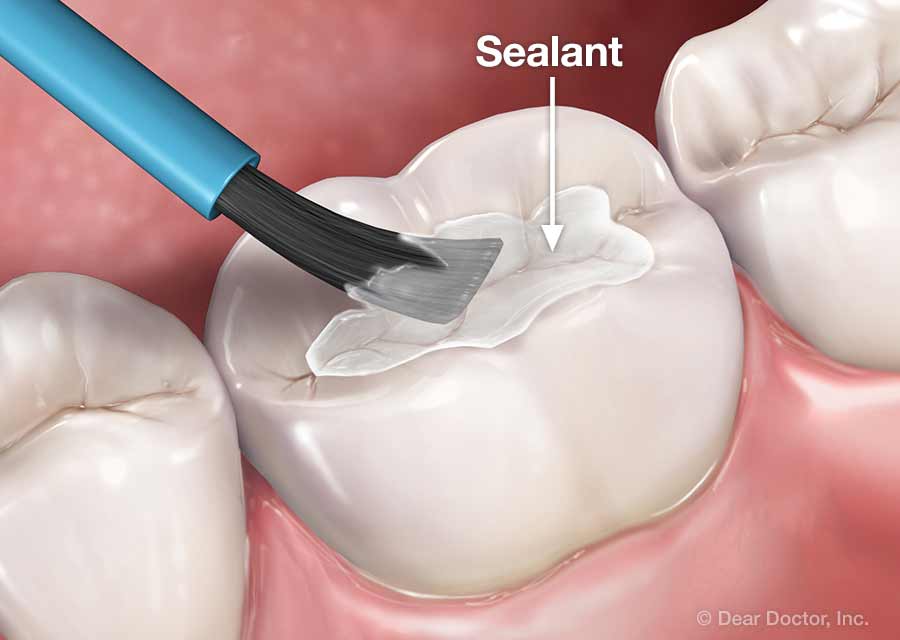
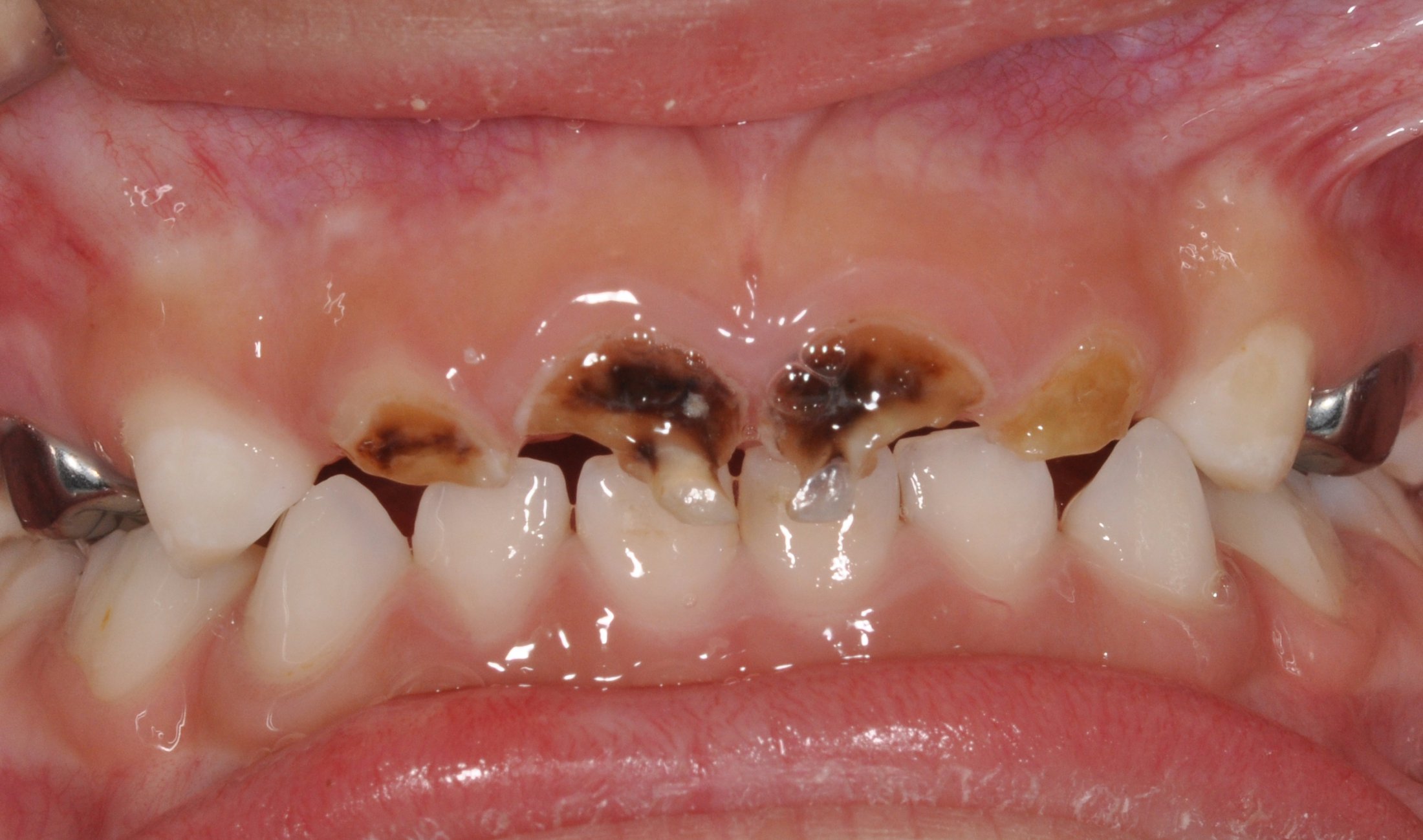
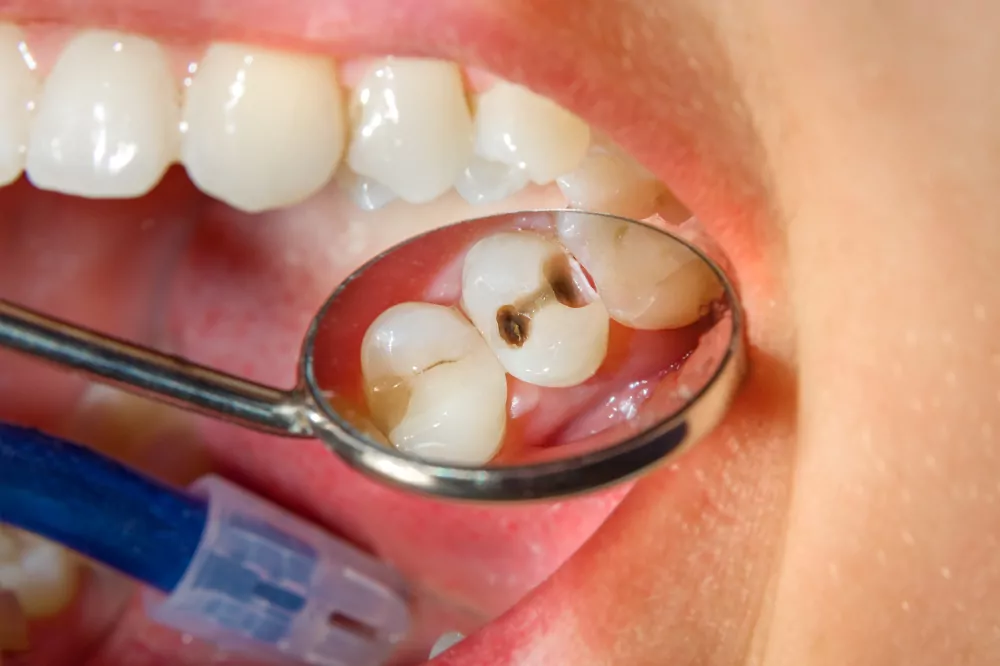



Leave a Reply